What is Stakeholder Analysis? Examples and Tips for Managers

Sorry, there were no results found for “”
Sorry, there were no results found for “”
Sorry, there were no results found for “”
Each and every project has stakeholders—people who have an interest or influence in the work. Knowing who is affected by a project is key to getting buy-in and support for the project’s success. One way project managers can accomplish this critical management step is by doing stakeholder analysis.
Part of a larger stakeholder engagement plan, this analysis lets you know who these people are. It also shows you how the project impacts them and what role they play in ensuring goals are met.
In this article, we’ll show you what stakeholder analysis is and why it’s important. You’ll also learn how to do stakeholder analysis and find a real-world example to reference when creating your own. 🛠️
Stakeholder analysis is the process of identifying individuals that are affected by a project and their needs. This analysis includes steps for organizing and prioritizing the different types of stakeholder groups.
The process focuses on grouping similar project stakeholders based on how much they will participate, their level of interest, and their level of influence. There is also a focus on how to communicate with each of the different stakeholder types.
The goal of stakeholder analysis is to identify internal and external groups that may have an impact on the project initiatives in terms of power or interest. It’s the first step in stakeholder management and a critical component when getting support for a project. ✨
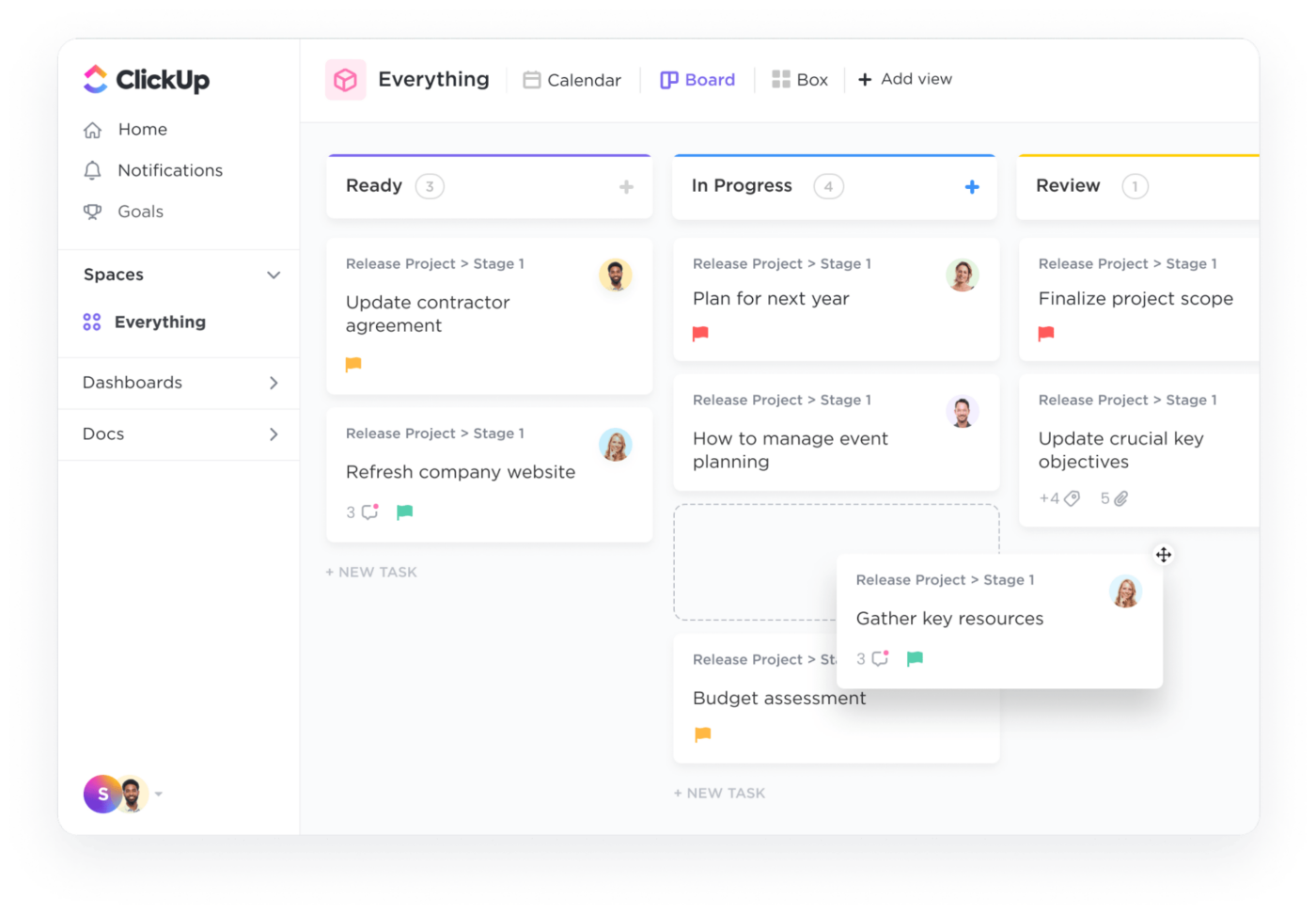
Stakeholder analysis is vital to ensure successful project outcomes. It provides early alignment, helps you avoid potential roadblocks, and creates a communication roadmap to meet your goals. Here’s a closer look at what makes stakeholder analysis so important. 👀
Check out the best stakeholder management software!
The early stages of projects are often chaotic. Conducting stakeholder analysis provides a clear purpose and lays out a strategy for getting key individuals on board early on. That makes kick-off and early-stage meetings easier to put together and more effective.
Plus, project monitoring is seamless since you have a clear vision.
Every stakeholder will know what’s expected of them and how they’ll benefit from the project objectives. You’ll also have a process roadmap to guide you along the way when you need to provide updates to different groups of potential stakeholders.
When you’re in project planning mode, knowing who your work will impact and getting support is critical during the early stages. Stakeholder analysis gives you insight into who will lend a hand and who may need some nudging to get behind your vision and goals.
By working with people who influence your project, you can draw on their knowledge and expertise to create deliverables. These individuals provide a form of backup in getting behind your project and influencing other stakeholders to get on board.
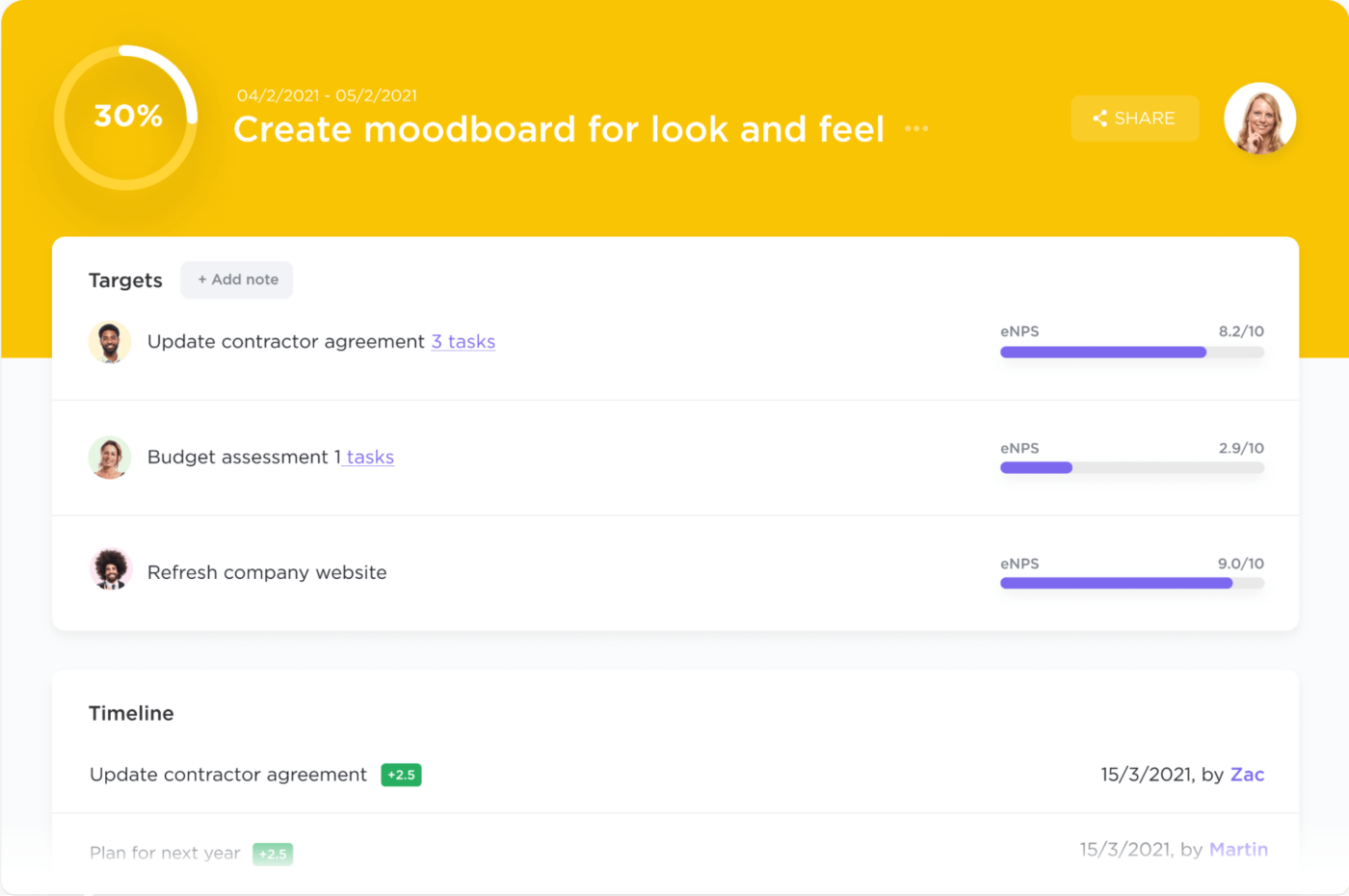
Nothing is worse than getting a few weeks into a project and finding out a key stakeholder doesn’t support your approach and wants to assign resources elsewhere. Identifying internal and external stakeholders early on means you’ll avoid these hiccups.
With successful stakeholder analysis, you’ll pick out any potential detractors and their concerns. Next, it’s time to formulate a plan that addresses their objections and shows how this project benefits them. If they still decide not to come on board, you haven’t wasted the project team’s time and can search for a new approach.
Stakeholder analysis looks a lot different depending on what industry you’re in or the type of project you’re working on. In general, the basic steps remain the same, even if the overall process varies. Here’s a look at how most organizations conduct a stakeholder analysis. ✍️
The first step is to pin down the stakeholders who have a financial or emotional interest in the project. It’s a good idea to make this list as comprehensive as possible. You can always narrow it down later if needed, but you definitely don’t want to leave out any important players.
To identify stakeholders, start with a brainstorming session with team members. You want to quickly lay out the project scope and work together to pinpoint key stakeholders.
These may include project stakeholders like:
Be thorough with your stakeholder identification, and be sure to document your project management process with project management software. Use stakeholder analysis tools like mind-mapping software to streamline your brainstorming process and keep track of the team discussion.

Be sure to account for the different types of stakeholders, including internal stakeholders and external ones. Here’s a quick breakdown of the three main types of stakeholders:
Once you’ve determined the key players and created a list of stakeholders, it’s time to categorize them. The goal is to divide the stakeholders into groups based on common interests or incentives.
There are several methodologies to do this, but we’ll focus on the two most common: the power/interest grid and the Salience Model. You can also use tools like stakeholder mapping templates to make the process easier. 🙌
This methodology, also known as the interest matrix, breaks down stakeholders based on their level of interest and power. The analysis divides them into four quadrants and provides a clear visual approach to each person’s level of influence and level of involvement.
As you work down your list of identified stakeholders, divide them into the four categories as follows:

The second methodology is called the Salience Model, which uses three parameters and eight stakeholder classifications. It’s ideal if your company is larger or you’re working with more complex groups of stakeholders.
The Salience Model breaks down stakeholders using three attributes:
These three attributes create the basis of a Venn Diagram with three large circles. There are then eight areas where you categorize stakeholders based on their attributes.
The final step in the stakeholder analysis process is prioritization. You know who is impacted by the project, you’ve broken them down into categories, and now it’s time to assign higher priority to the ones with the most influence and interest. ✅
This prioritization may change over the course of the project. In the beginning, you may need to meet the needs of finance stakeholders first.
Later on, you may need to prioritize stakeholders in the development sector. Knowing who your stakeholders are and what they need will form the basis of your prioritization process.
Once you’ve prioritized your stakeholders, work with other team members to create communication strategies for different stakeholders. Some will require regular, high-level updates, while others will only need short briefs to get up to speed.
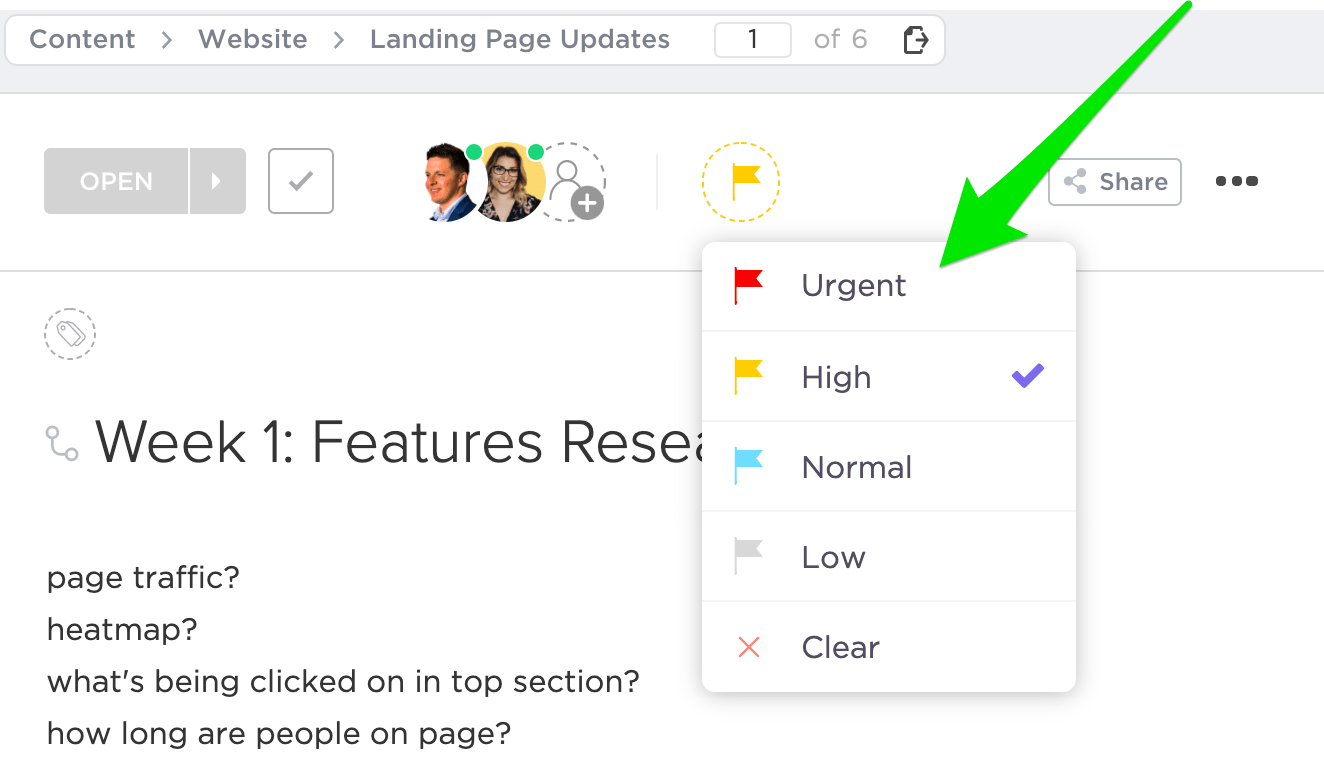
Looking for a stakeholder analysis example to use as a reference when drawing up your own? We’ve got you covered. Here, we’ll walk you through the process of creating a stakeholder analysis using the ClickUp Stakeholder Analysis Matrix Template.
Let’s say you work at a marketing firm, and you’re running stakeholder analysis for an upcoming project running ads on a major platform. This will be an entirely new project. To ensure the project’s success, you need buy-in from executives at the company as well as other team members in the marketing department.
You’ll start by figuring out who your stakeholders are. Get your team together to brainstorm and highlight anyone that may have an interest in or influence over your stated project. Use mind maps to document the process, or just jot down names and roles on a list.
Some stakeholders you may want to consider include:
Once you have a list, get it all recorded in one easy place. Use the matrix to add information about each individual. The template lays out a colorful grid highlighting the various interests and power levels. On the right, you fill out the list of stakeholders and plot them directly in the matrix template.

Plot the different stakeholders in the chart based on their level of interest and power. Each grid box is color-coded to easily see which team members need to be prioritized and which ones should be monitored or briefed along the way.
For this marketing firm example, you would place the marketing manager and controller in high levels of power. However, the controller’s interest level would be lower than your marketing manager’s.
The same goes for all the other players on your list. Project managers would likely have high interest but less power. Writers who create your ads are still stakeholders, though they’ll have both less power and less interest.
You can also use ClickUp’s Stakeholder Analysis Template to make a list of your stakeholders. To start, download the template and click “Add Task.” Fill out the stakeholder’s name, role, email, level of support, influence, and action.
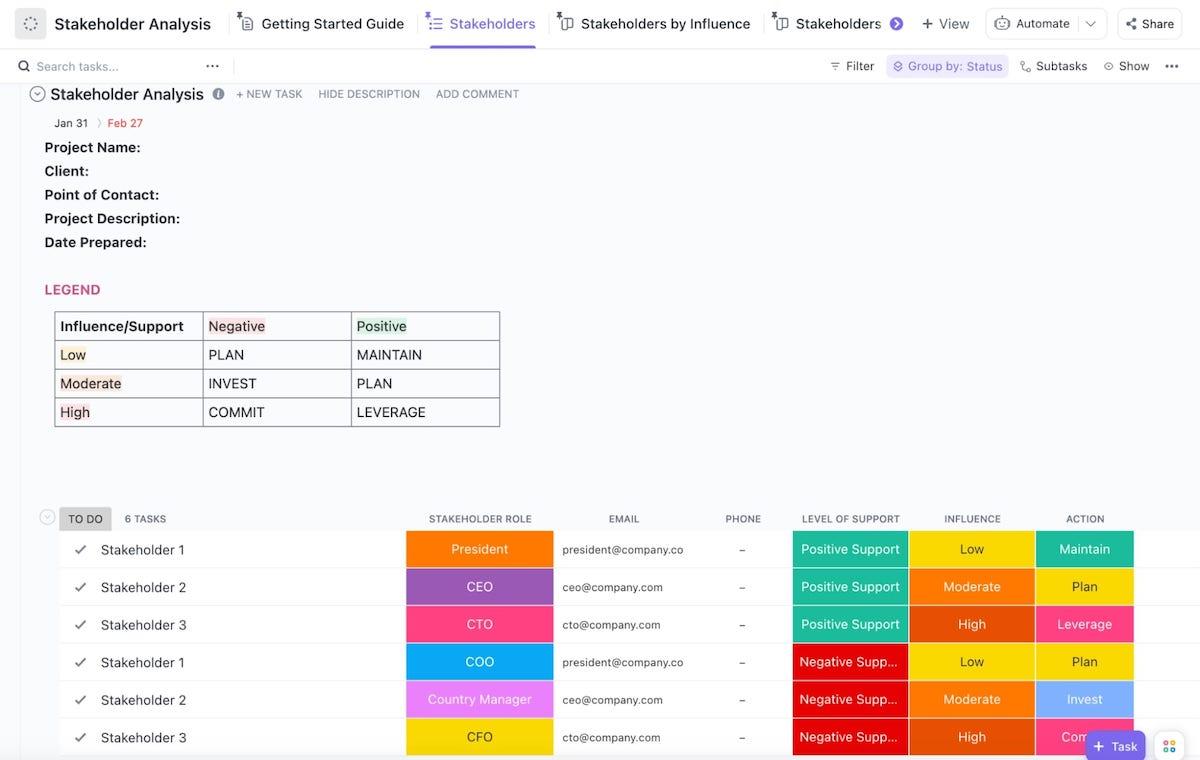
Hop into the Stakeholders by Action view to see which individuals contribute to what aspect of the project. Use the filters to see only those individuals that affect financial actions—like the controller—or those who play a role in handling project controls and planning, like project managers.
The Stakeholders by Support view lets you see who is backing your project and who has a negative view of the work. Using this information, prioritize communicating with the individuals that need more guidance. Be sure to address concerns in order for them to support the project.
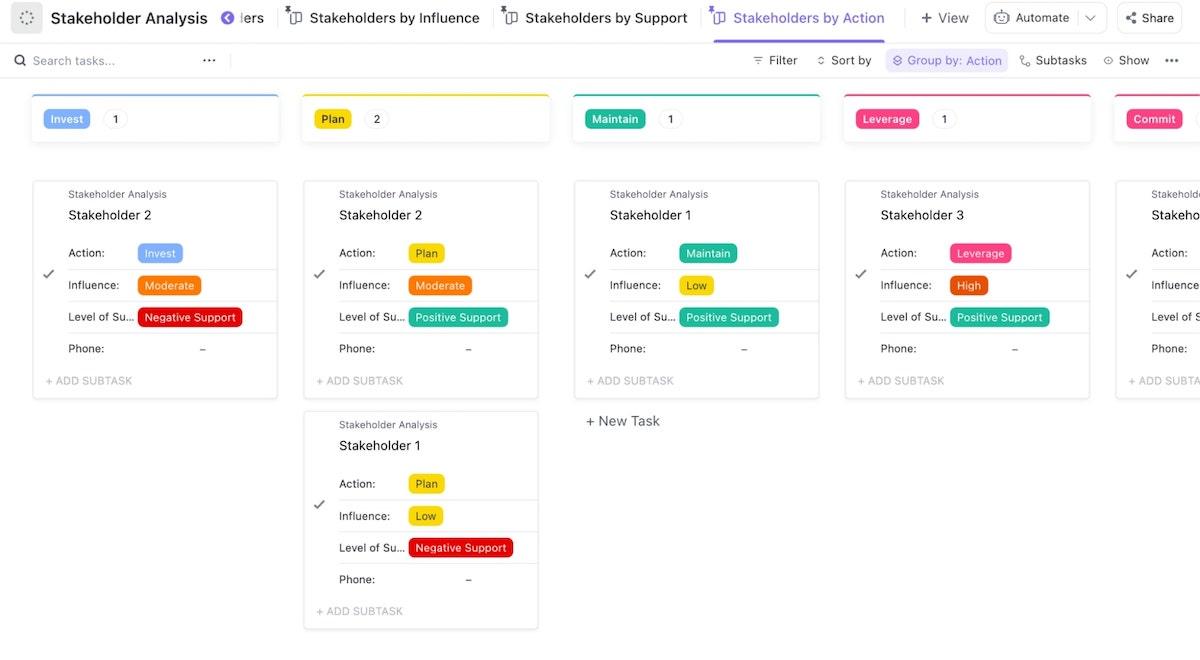
In addition, leverage support from key stakeholders to provide backup and help get other individuals on board. These individuals have more sway over colleagues, providing valuable support when you need it most.
For example, let’s say your marketing manager thinks the ad project is a great way to drive revenue and build your brand. However, the controller thinks you’re throwing money into the wind. Getting the marketing manager to help explain the financial implications of the project to the controller can help generate support.
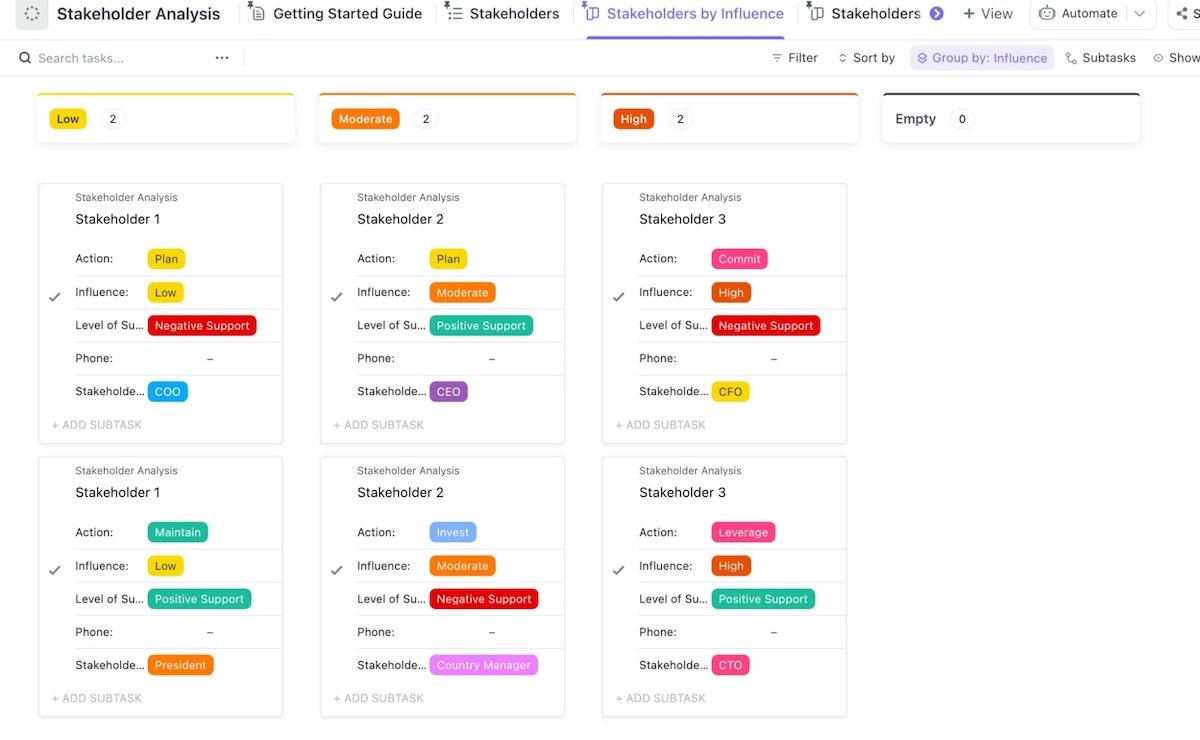
The Stakeholders by Influence view enables you to see who the most powerful stakeholders are. This way, you can focus your communication efforts on these individuals. That includes early-stage kick-offs as well as regular updates throughout the project.
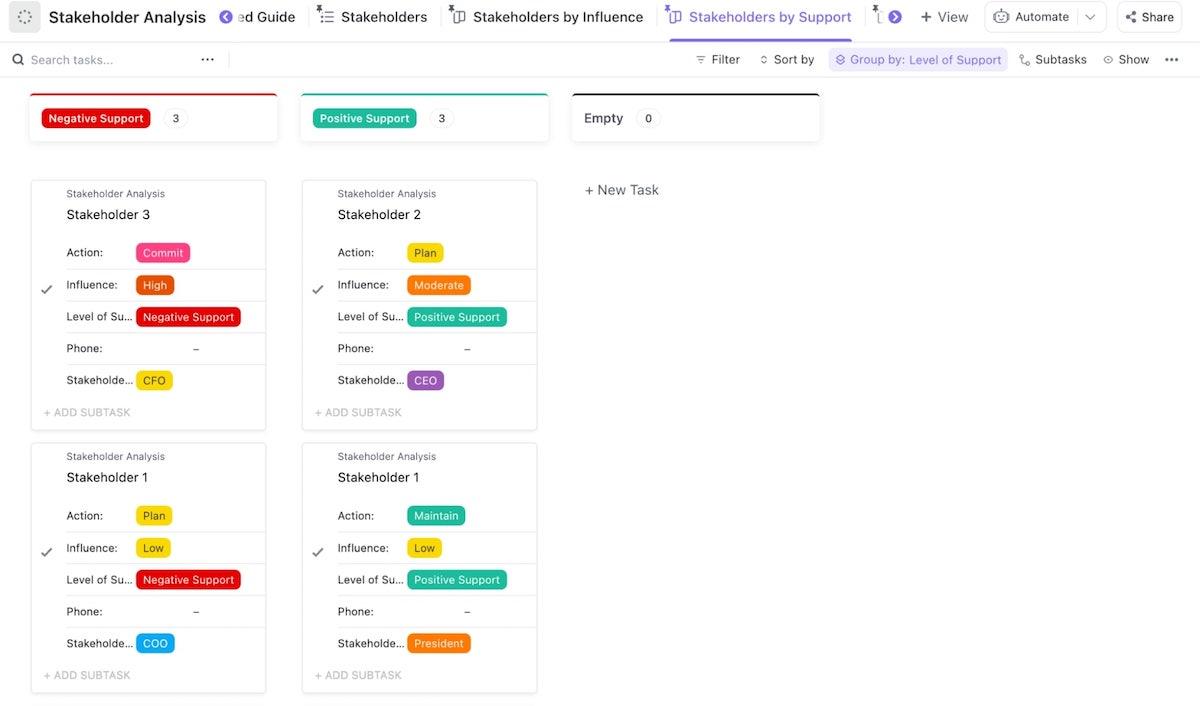
Now that you know where everyone stands, it’s time to draft a communication plan for each one. Add tasks in ClickUp for regular monitoring and communications, especially for the most important stakeholders.
You’ll want to take time to ensure your controller is updated, particularly since they’re skeptical about the project. For individuals with lower interest, you can plan less frequent updates. Those with high interest and high power should be updated most frequently.
Automate meetings and progress reports to stay on top of the project’s success and deliverables. You can pre-plan weekly or bimonthly meetings to keep stakeholders informed. Keep in mind different groups of stakeholders will need a different cadence when it comes to reporting.
To be an effective project manager, you need to know how your projects affect individuals on your team and at the company. With effective stakeholder analysis, you’ll be able to create a clear strategy, avoid conflicts, and garner support from key players in your organization.
Try ClickUp today and get started crafting informative stakeholder analysis for all of your key projects. With ClickUp tools, you’ll save time drafting lists of stakeholders and developing the best approaches for each one!
© 2025 ClickUp